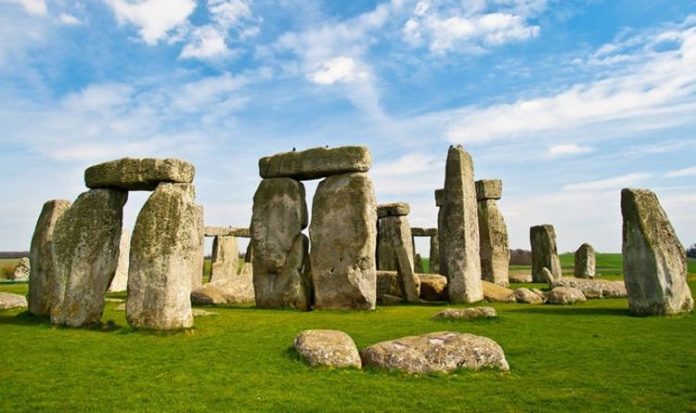Dating back more than 5,000 years. the stone arrangement found in the fields of Wiltshire has baffled researchers for centuries. Last year a team of experts discovered a ring of large shafts near Stonehenge that form what is believed to be the largest prehistoric monument ever discovered in Britain. Tests carried out on the pits suggested they were dug by Neolithic people more than 4,500 years ago.
Experts believe the 20 or more shafts may have served as a boundary to a sacred area connected to the henge.
Historian Dan Snow spoke to English Heritage archaeologist Dr Heather Sebire about the breakthrough during History Hit’s ‘Stonehenge’ documentary.
She said: “You probably heard that they found an incredible landscape feature just up to the northwest.
“The Durrington Walls is massive, much bigger than Stonehenge, but they’ve found something even bigger again.
“That was through geophysical techniques, there are so many techniques you can use today.
“They have been able to plot a series of pits that takes it into the monument of Durrington Walls, but also Woodhenge – which is the smaller version of Stonehenge.”
And Dr Sebire detailed how the sheer size of the monument has led to speculation over how advanced the civilisation was.
She added: “We think this circular arrangement that is now pits held upright timbers – a timber monument like Stonehenge.
“It would have looked like a wall of timber even though there were gaps.
READ MORE: Archaeology find ‘rewriting’ English history proved 1,000-year-old legend ‘was reality’
“They didn’t have mechanical diggers, but they must have had a reason.
“Just when you think you have the measure of it all, something else turns up.”
A recent study suggested that the ancestors of the builders of the ancient monument travelled west across the Mediterranean before reaching Britain around 4,000BC.
Researchers compared DNA extracted from Neolithic human remains found across Britain with that of people alive at the same time in Europe.
The Neolithic inhabitants were said to be descended from populations originating in Anatolia (modern Turkey) that moved to Iberia before heading north.







